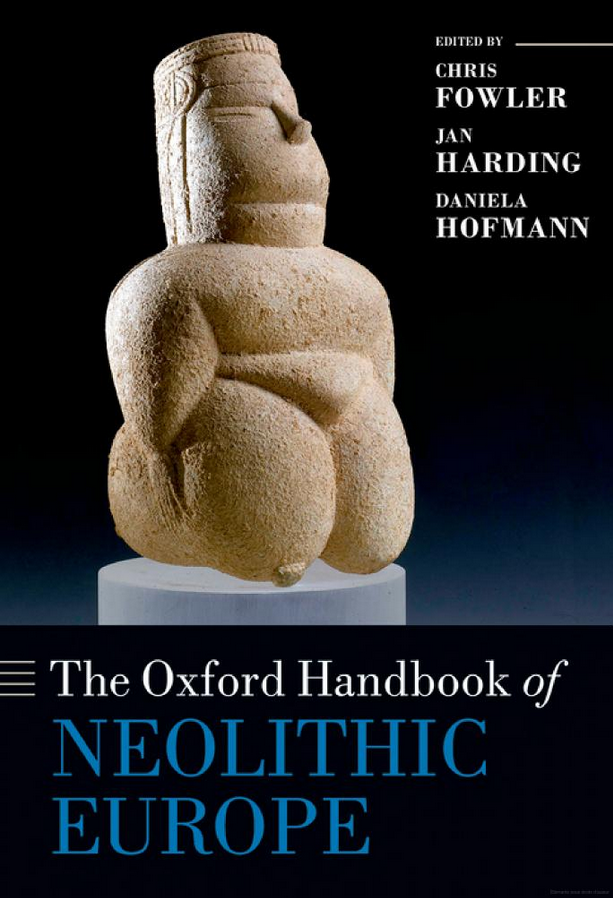- Belgique : mégalithes et cartes postales
- Carnac : une bande dessinée à caractère fantastique
- ECOSSE : Un cercle de pierre daté d'il y a 3500 ans créé de toute pièce par un fermier dans les années 90.
- Estrémadure : La sécheresse révèle une construction mégalithique vieille de 4000 ans.
- Haute-Savoie: Le dolmen de la Pierre aux Fées et le Campaniforme
- Morbihan : Ces Bretons veulent sauver leur menhir de 7 000 ans
- Mégalithisme et philatélie
- Russie : le complexe mégalithique de Vera Island
- Seine-et-Marne : retour sur une découverte mégalithique hors norme à Chamigny
- Un curieux guide des mégalithes
Le mégalithisme dans The Oxford Handbook of Neolithic Europe
10/11/2015

![]() En cette année 2015, Oxford University Press a publié un volumineux Handbook of Neolithic Europe sous la direction de Chris Fowler, Jan Harding et Daniela Hofmann, 1130 p., ISBN 978-0-19-95484-1.
En cette année 2015, Oxford University Press a publié un volumineux Handbook of Neolithic Europe sous la direction de Chris Fowler, Jan Harding et Daniela Hofmann, 1130 p., ISBN 978-0-19-95484-1.

La couverture de cette publication
Parmi les multiples chapitres, 56 au total, traitant de toutes les périodes du Néolithique, tous plus intéressants les uns que les autres, on relèvera notamment, p. 813-838, l’article de Vicky Cummings, Magdalena S. Midgley et Chris Scarre intitulé « Chambered Tombs and Passage Graves of Western and Northern Europe », ainsi que, p. 911 à 924 « A Place in the Cosmos : Celestial Bodies and the Passage Grave of Western Europe », par Michael Hoskin.
Ci-dessous la présentation en anglais de l’ouvrage :
The Neolithic - a period in which the first sedentary agrarian communities were established across much of Europe - has been a key topic of archaeological research for over a century. However, the variety of evidence across Europe and the way research traditions in different countries (and languages) have developed makes it very difficult for both students and specialists to gain an overview of continent-wide trends. The Oxford Handbook of Neolithic Europe provides the first comprehensive, geographically extensive, thematic overview of the European Neolithic - from Iberia to Russia and from Norway to Malta - offering both a general introduction and a clear exploration of key issues and current debates surrounding evidence and interpretation. Chapters written by leading experts in the field examine topics such as the movement of plants, animals, ideas, and people (including recent trends in theapplication of genetics and isotope analyses); cultural change (from the first farming to the first metal artefacts); domestic architecture; subsistence; material culture; monuments; and burial and other treatments of the dead. In doing so, the volume also considers the history of research and sets out agendas and themes for future work in the field.